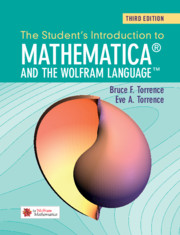An innovative algorithm to determine the inverse solution of a geodesic with the vertex or Clairaut constant located between two points on a spheroid is presented. This solution to the inverse problem will be useful for solving problems in navigation as well as geodesy. The algorithm to be described derives from a series expansion that replaces integrals for distance and longitude, while avoiding reliance on trigonometric functions. In addition, these series expansions are economical in terms of computational cost. For end points located at each side of a vertex, certain numerical difficulties arise. A finite difference method together with an innovative method of iteration that approximates Newton's method is presented which overcomes these shortcomings encountered for nearly antipodal regions. The method provided here, which does not involve an auxiliary sphere, was aided by the Computer Algebra System (CAS) that can yield arbitrarily truncated series suitable to the users accuracy objectives and which are limited only by machine precisions.


